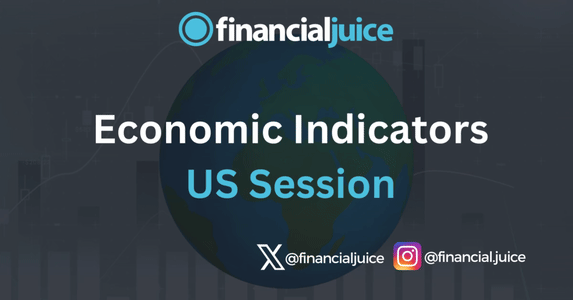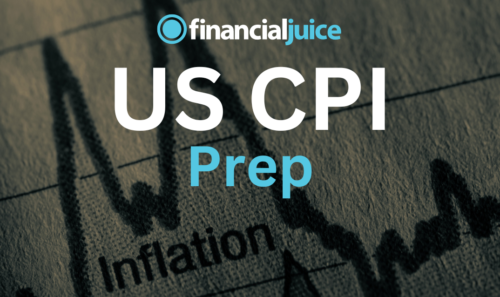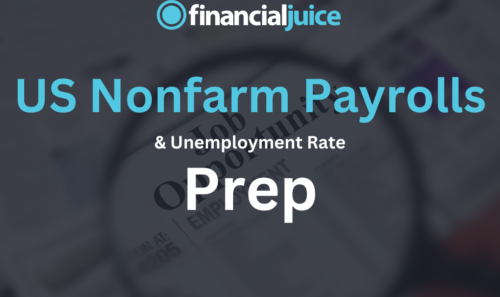
Week Ahead: Economic Indicators (US)
Hey, Traders!
For the July 29th week, here is a list of all of the major economic indicators being released during the US Session, with a brief synopsis of what they represent and what to possibly expect from the markets in reaction.
Tuesday 30th July
10:00 ET
US JOLTS Job Openings for June
The Job Openings and Labor Turnover Survey is a monthly report published by the US Bureau of Labor Statistics.
It provides data on job openings, hires, quits, layoffs, and other separations in the US labor market.
Job openings represent the number of available positions that businesses are actively seeking to fill.
The JOLTS report offers insights into the demand for labor, the dynamics of the job market, and trends in voluntary and involuntary job separations.
What to Expect
It is worth noting that this release is 1 month behind the other monthly US employment reports coming out this week.
If JOLTS comes in higher than expected, this could mean companies have higher demands for workers.
This could mean companies are doing well and have demand for more labor, despite higher interest rates.
This could show that companies can handle high rates, and this could feed into the ‘higher for longer’ rate narrative.
If realized, the dollar could strengthen, and US stocks could weaken.
The opposite could also be true if it comes in lower than expected.
US CB Consumer Confidence for July
The Consumer Confidence Index (CCI) is a measure of how optimistic or pessimistic consumers are about the overall state of the economy and their personal financial situation.
In the United States, the Conference Board conducts monthly surveys to gauge consumer confidence, asking questions about current economic conditions and future expectations.
A higher index value indicates greater confidence, suggesting consumers are more likely to spend, while a lower value implies decreased confidence and potentially reduced spending.
What to Expect
If consumer confidence comes in higher than expected, this could lead to higher consumer spending.
This could be an upside risk to inflation, which could feed into the narrative of ‘higher for longer’ rates.
If realized, the dollar could see some strength, while US stocks could see some weakness.
If it comes in cooler than expected, the opposite could be expected.
On the other hand, any deviation too large could bring up recession fears or overheating fears, which could cause any reaction to be more volatile.
Wednesday 31st July
08:15 ET
US ADP Employment Change for July
The ADP Employment Change report provides an estimate of the change in non-farm private employment in the United States, excluding government jobs and farming.
It is released monthly by the ADP Research Institute in collaboration with Moody’s Analytics, using payroll data from a subset of ADP’s clients.
The report serves as an early indicator of the health of the labor market.
What to Expect
If ADP comes in hotter (higher) than expected, this indicates a strengthening job market, which could be an upside risk to inflation, as the FOMC has noted that a higher unemployment rate is in line with their projections of inflation moving back to the 2% target.
If realized, this could show some strength in the dollar and weakness in US Stocks, as markets reprice their projections on US interest rates.
If ADP comes in cooler (lower) than expected, the opposite could also be true.
08:30 ET
Canadian GDP for May
Gross Domestic Product measures the total value of goods and services produced within a country’s borders over a specific period, typically annually or quarterly.
In the case of Canada, its GDP reflects the sum of consumption, investment, government spending, and net exports.
It serves as a crucial indicator of the country’s economic health and performance, influencing policies and decisions at both national and international levels.
What to Expect
If GDP comes in higher than expected, it could be an upside risk to inflation, however, it could also reduce the economy’s risk of a recession.
Ultimately, higher GDP is often good for Canadian stocks and CAD as well, as larger economic growth is good for corporate profits, as well as foreign investment in CAD-backed assets.
10:30 ET
US Weekly EIA Crude Oil Inventories
The US Weekly Energy Information Administration Crude Oil Inventories report provides information on the total stockpile of crude oil in the United States.
It includes data on the changes in crude oil inventories, indicating whether there has been an increase or decrease in the amount of oil held in storage.
This report is crucial for assessing supply and demand dynamics in the oil market and can influence oil prices.
What to Expect
A significant build-up in inventories may indicate oversupply, putting downward pressure on prices, while a decline may suggest increased demand, potentially impacting prices in the opposite direction.
14:00 ET
US Interest Rate Decision
Prep Article Here
The US Interest Rate Decision is made by the Federal Reserve’s Federal Open Market Committee (FOMC) and typically announced eight times a year.
This decision determines the target range for the federal funds rate, which is the interest rate at which banks lend to each other overnight.
The decision influences borrowing costs for consumers and businesses, affecting economic activity, inflation, and employment.
The FOMC bases its decision on various economic indicators such as GDP growth, inflation, and unemployment. The announcement is closely watched by investors, policymakers, and economists for insights into the future direction of US monetary policy.
What to Expect
Economists and the markets largely expect the US interest rate to remain unchanged at this meeting, so attention will turn to the Rate Statement.
If the rate statement is seen as more hawkish by reducing the likelihood of a Fed rate cut in September, which has been all but priced in by the markets since last week, then we would likely see weakness in US stocks and strength in the dollar.
Whereas if the rate statement is seen as more dovish, including language that indicates greater confidence in inflation’s return to target, then this could boost/solidify rate cut bets for the September meeting, which could cause strength in US stocks, and weakness in the dollar.
Thursday 1st of August
08:30 ET
US Weekly Initial and Continuing Jobless Claims
The US Weekly Initial Jobless Claims report measures the number of people filing for unemployment benefits for the first time.
The Continuing Jobless Claims report counts those who are still receiving unemployment benefits after their initial claim.
Both are released weekly by the Department of Labor and are key indicators of labor market health.
High numbers suggest a weakening job market, while low numbers indicate strength.
What to Expect
This release is likely to be overshadowed by the 3 more important monthly US employment reports released this week.
However, a higher than expected jobless claims number would indicate higher unemployment, which could point toward a downside risk on inflation, which could push forward Fed rate cut bets, and cause strength in US stocks and weakness in the dollar.
The inverse could also be true if jobless claims comes in lower than expected.
09:45 ET
US S&P Manufacturing PMI July Final
The US S&P Manufacturing PMI is a monthly economic indicator compiled by S&P Global that measures the activity level of purchasing managers in the manufacturing sector.
It surveys around 400 companies, including a mix of large and small firms, assessing factors like new orders, output, employment, supplier delivery times, and inventory levels.
As a diffusion index, a reading above 50 indicates expansion, while below 50 signals contraction.
This index helps gauge the health of the manufacturing industry and provides insights into overall economic conditions.
What to Expect
If it come in higher than expected, generally, this could indicate there is more demand for goods and services.
This could lead to higher consumer spending, which could be an upside risk to inflation and feed the ‘higher for longer’ rate narrative.
If realized, the dollar could see some strength, while US stocks could see some weakness.
If it comes in cooler than expected, the opposite could be expected.
However, with earnings in focus, markets will also be thinking about the positive effect on corporate profits that a higher-than-expected manufacturing PMI would create, so equity reactions may be pulled between the potential effect on monetary policy and the potential effect on corporate profits.
10:00 ET
US ISM Manufacturing PMI for July
The US ISM Manufacturing PMI is a monthly economic indicator published by the Institute for Supply Management that measures the activity level of purchasing managers in the manufacturing sector.
It surveys over 300 purchasing and supply executives on new orders, production, employment, supplier deliveries, and inventories.
As a diffusion index, a reading above 50 indicates expansion in the manufacturing sector, while a reading below 50 signals contraction.
This index provides insights into the health of the manufacturing industry and overall economic conditions.
What to Expect
If it come in higher than expected, generally, this could indicate there is more demand for goods and services.
This could lead to higher consumer spending, which could be an upside risk to inflation and feed the ‘higher for longer’ rate narrative.
If realized, the dollar could see some strength, while US stocks could see some weakness.
If it comes in cooler than expected, the opposite could be expected.
However, with earnings in focus, markets will also be thinking about the positive effect on corporate profits that a higher-than-expected manufacturing PMI would create, so equity reactions may be pulled between the potential effect on monetary policy and the potential effect on corporate profits.
Differences between S&P and ISM Manufacturing PMIs
Survey Population: ISM focuses on larger firms across a range of industries, while S&P includes a broader mix of company sizes, including more small and medium-sized enterprises.
Weighting and Methodology: The ISM PMI uses equal weighting for its components, while the S&P PMI uses different weighting, emphasizing order volumes and production more heavily.
Focus Areas: While both indices measure similar components, they may emphasize different aspects slightly due to their methodologies and sample sizes.
These differences can lead to variations in the readings of the two indices, offering slightly different perspectives on the health of the manufacturing sector.
Friday 2nd August
08:30 ET
US Employment Situation for July
Prep Article Here
US Nonfarm Payrolls
US Nonfarm Payrolls, commonly referred to as NFP, is a key economic indicator published by the Bureau of Labor Statistics on a monthly basis.
It represents the total number of paid workers in the US, excluding farm employees, government workers, and non-profit organization employees.
The NFP report provides insights into the overall health of the labor market, reflecting changes in employment levels.
The data is closely watched by policymakers, economists, and investors for its impact on financial markets and economic policy decisions.
US Unemployment Rate
The US Unemployment Rate is a widely tracked economic indicator that measures the percentage of the labor force that is unemployed and actively seeking employment.
It is calculated by dividing the number of unemployed individuals by the total labor force.
The Unemployment Rate can differ from the Nonfarm Payrolls data due to differences in their definitions and methods of measurement.
While NFP represents the total number of paid workers in the US, excluding certain categories like farm and government employees, the Unemployment Rate considers the percentage of the labor force that is actively seeking but unable to find employment and is conducted via household surveys as opposed to payrolls data.
US Average Earnings YoY
US Average Earnings Year-over-Year is an economic indicator that measures the annual percentage change in the average earnings of all non-farm employees in the United States.
Average earnings include wages and salaries, and the YoY comparison helps assess the rate of change in workers’ compensation over a one-year period.
Positive growth in Average Earnings YoY is indicative of increasing income levels, while negative growth suggests a decline in average earnings. This data point gives insights into wage trends and their implications for consumer spending and inflation.
What to Expect
The US nonfarm payrolls is the most highly monitored employment indicator by both traders and policymakers.
A higher-than-expected reading suggests that employment is not slowing, posing an upside risk to inflation.
This may lead the Federal Reserve to maintain interest rates higher for longer, as the FOMC has mentioned that a higher unemployment rate could be necessary to see inflation fall to the 2% target.
This repricing of US monetary policy may cause weakness in US stocks while strengthening the dollar.
The inverse could also be true, if Nonfarm Payrolls comes in lower-than-expected, this could cause markets to push forward bets on Federal Reserve rate cuts, which could cause strength in US stocks and weakness in the dollar.
The FOMC has also been focussed on the employment side of their mandate recently, noting that an unwarranted slowdown in employment ‘could warrant a policy response’ (rate cuts).





